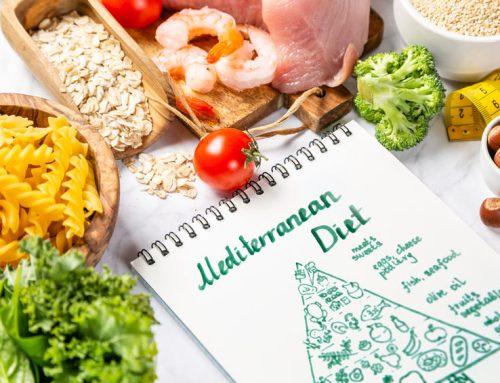Try some good nutrition from abroad. Other cultures have different diets and many of them involve good nutrition.
Penny M. Kris-Etherton, Ph.D., R.D., distinguished professor of nutrition at Penn State University say that as much as many of us relish eating, it’s easy to fall into a rut and feel bored with our usual repertoire of meals. “That’s when it’s time to shake things up and try something new and different.”
For inspiration, look at how people eat in other cultures. By incorporating a few healthy strategies from around the world, you can improve your own diet. Think of it as a foodie vacation that you can take without ever leaving your kitchen.
Import Good Nutrition from Abroad
Here’s how to import good nutrition habits from abroad.
Vietnam: Start With Soup
Pho, a broth soup that contains rice noodles, vegetables, and sometimes meat, is a breakfast staple in Vietnam.
- Why it’s healthy: A bowl of hot soup is a very satisfying way to start the day—and it can be an easy way to sneak a serving or two of vegetables into a meal that often contains none. And, unlike many traditional American breakfast foods, most soups are low in sugars and saturated fats. A bowl of soup usually provides a high volume of food for a low number of calories.
India: Add Plant Protein
In India, the word “dal” can mean lentils or the traditional thick stew or soup made from them. Dal is a staple of Indian cuisine, and there are good reasons to make it one of yours as well.
- Why it’s healthy: Lentils and other pulses (a category that includes chickpeas, dried peas, and beans) are high in protein, fiber, potassium, and folate. They’re also low in calories and have virtually no fat. “Diets rich in lentils and other legumes are linked to lower rates of diabetes and cardiovascular disease,” says Becky Ramsing, R.D.N., senior program officer at the Johns Hopkins Center for a Livable Future.
Greece: Eat Healthy Fats
To the inhabitants of Greece, the Mediterranean diet isn’t so much a diet as a way of life. And that’s easy to do in Greece, where the most important components of the diet are plentiful. One of the cornerstones of the Mediterranean diet is a focus on healthy fats—such as olive oil, avocados, fatty fish, and nuts.
- Why it’s healthy: In a 2018 study, people ages 65 and older who ate a Mediterranean diet had a 25 percent lower risk of dying from any cause during the study period. Rather than avoiding foods that are high in monounsaturated and polyunsaturated fats, you should embrace them—as long as you’re eating them instead of unhealthier saturated fats.
Brazil: Stick to Whole Foods
When the most recent dietary guidelines were issued by the Brazilian government in 2014, they were lauded by many nutrition pros as forward-thinking. Instead of aiming for specific amounts of nutrients, they emphasize eating more whole foods and avoiding ultra-processed ones. In other words, they recommend eating the way Brazilians—and the rest of us—used to eat before fast-food restaurants and prepackaged meals dominated our diets.
- Why it’s healthy: Adopt this back-to-basics way of eating and you will automatically reduce calories, because processed foods pack a lot of calories into a small amount of food. You’ll also up your fiber intake, because you’ll be eating more whole grains, fruits, and vegetables. And you’ll limit the amount of sodium, sugars, and unhealthy saturated fats you eat.
Mexico: Have a Bigger Lunch
In traditional Mexican (and many South American) cultures, the midday meal is the large one, and what we think of as dinner is more of an evening snack.
- Why it’s healthy: “Eating a large lunch and a small dinner seems to be metabolically healthy,” says Roberts.
Italy: Slow Your Pace
When Italians gather around the dining table, they’re in no hurry to get up. Meals aren’t just an opportunity to eat food, they’re a reason to relax and connect with friends and family.
- Why it’s healthy: “When you slow down your meal, you’re taking the time to enjoy interacting with company,” says Kris-Etherton. “The social aspect becomes more of a priority rather than just eating all that you possibly can as fast as you can.”
Japan: Go For 80 Percent Full
The residents of Okinawa, a chain of islands off the coast of Japan, boast some of the longest life spans in the world. One of the reasons may be their practice of hara hachi bu, which translates to “eat until you’re 80 percent full.”
- Why it’s healthy: This is another way to look at portion control,” says Kris-Etherton. “It’s about paying more attention to what you’re eating, how much you’re eating, and recognizing your internal hunger and fullness cues.”
France: Treat Yourself
The French don’t deprive themselves of delicious desserts—but they also don’t overdo it. The secret? Eating small portions of sweets that truly satisfy.
- Why it’s healthy: Portion control is a key part of a healthy diet—especially when you’re trying to lose (or at least not gain) weight. “French people must be eating fewer calories, because they have much lower rates of obesity than Americans,” says Roberts. “But they don’t seem to do it by counting calories.” Rather, they’ve learned the value of savoring a few bites of fine chocolate instead of mindlessly munching on half a box of cookies.
Click here to read full article about good nutrition from abroad.







